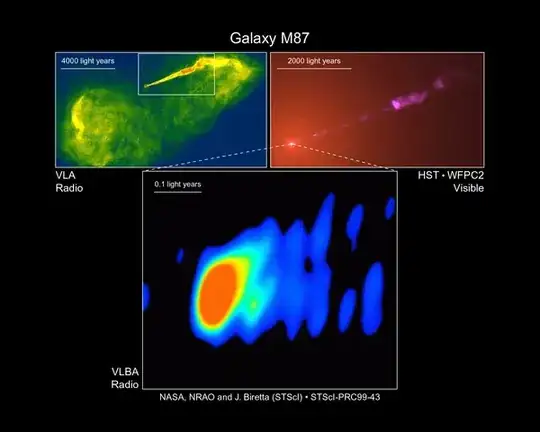I think the most common explanation for this kind of structure is ram pressure from the galaxy's motion through the surrounding intracluster medium (ICM). In the rest frame of the galaxy and jet, the ICM is blowing past with a velocity of several hundred km/sec, and this is enough to divert the flow of the jet. In this picture, the jet isn't moving back toward the galaxy; this is a projection effect (the inner jet is thought to be pointed toward us, only 30 degrees or so away from our line-of-sight to the galaxy).
A second factor may be that the point where the jet seems to bend is where its smooth, relativistic flow breaks up due to the Kelvin-Helmholtz instability. The initial small kink visible at the right-hand edge of the HST-WFPC2 image (upper right) is probably a sign of the instability starting to disrupt the jet. Once the smooth flow of the jet breaks up, it is likely to slow down, making it more easily diverted by the ram pressure of the ICM.
